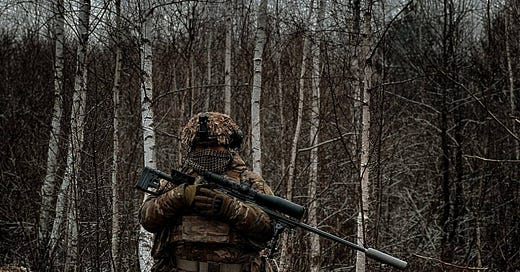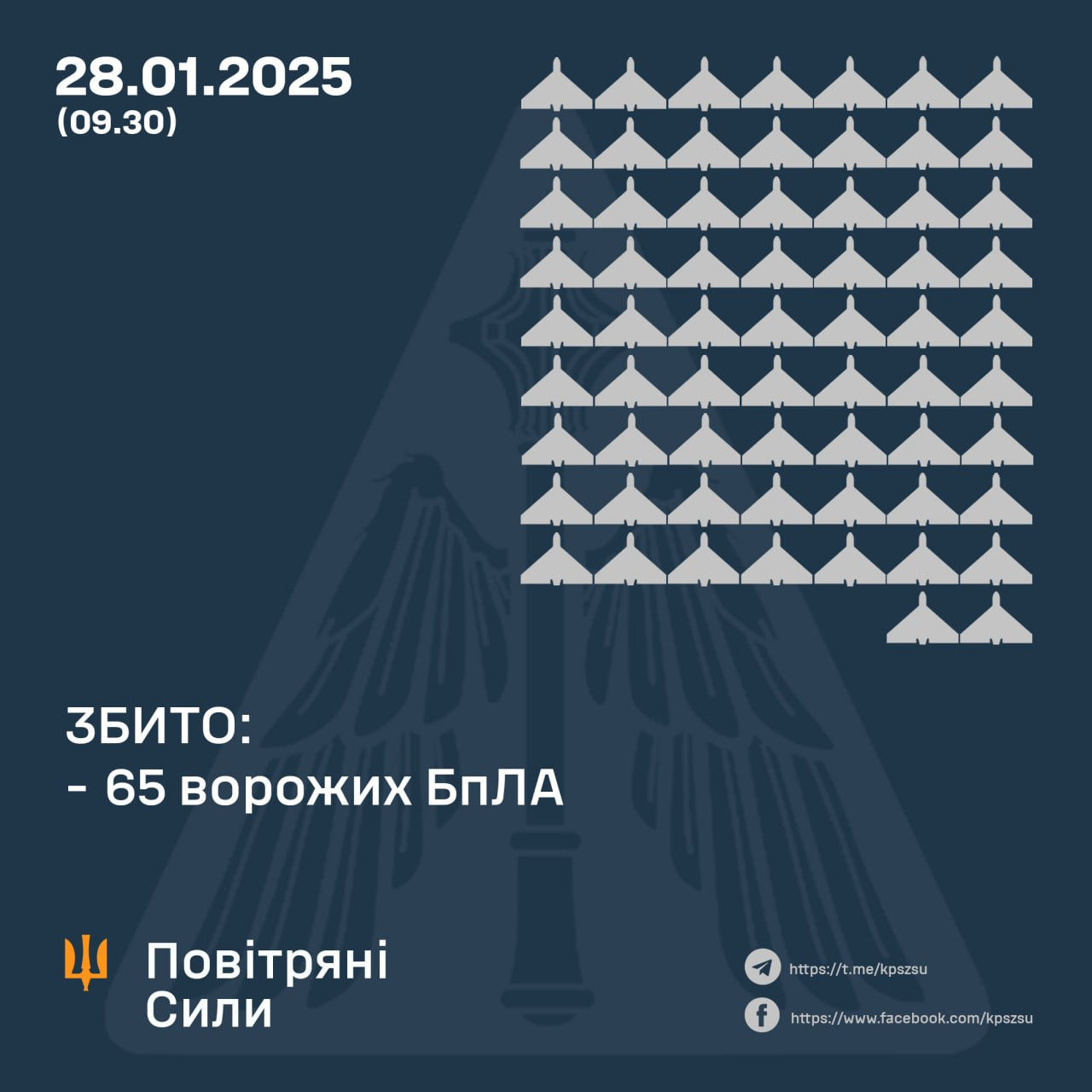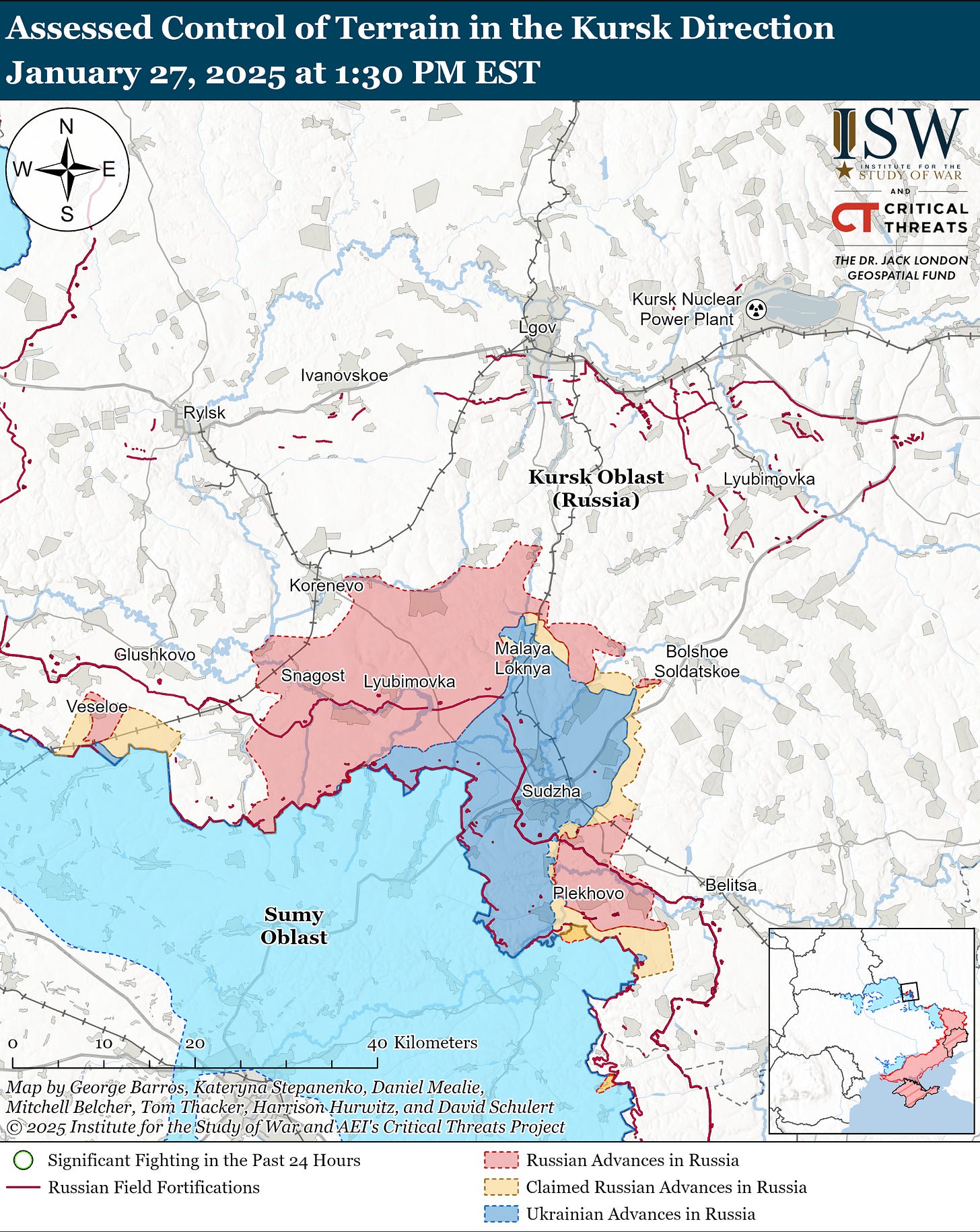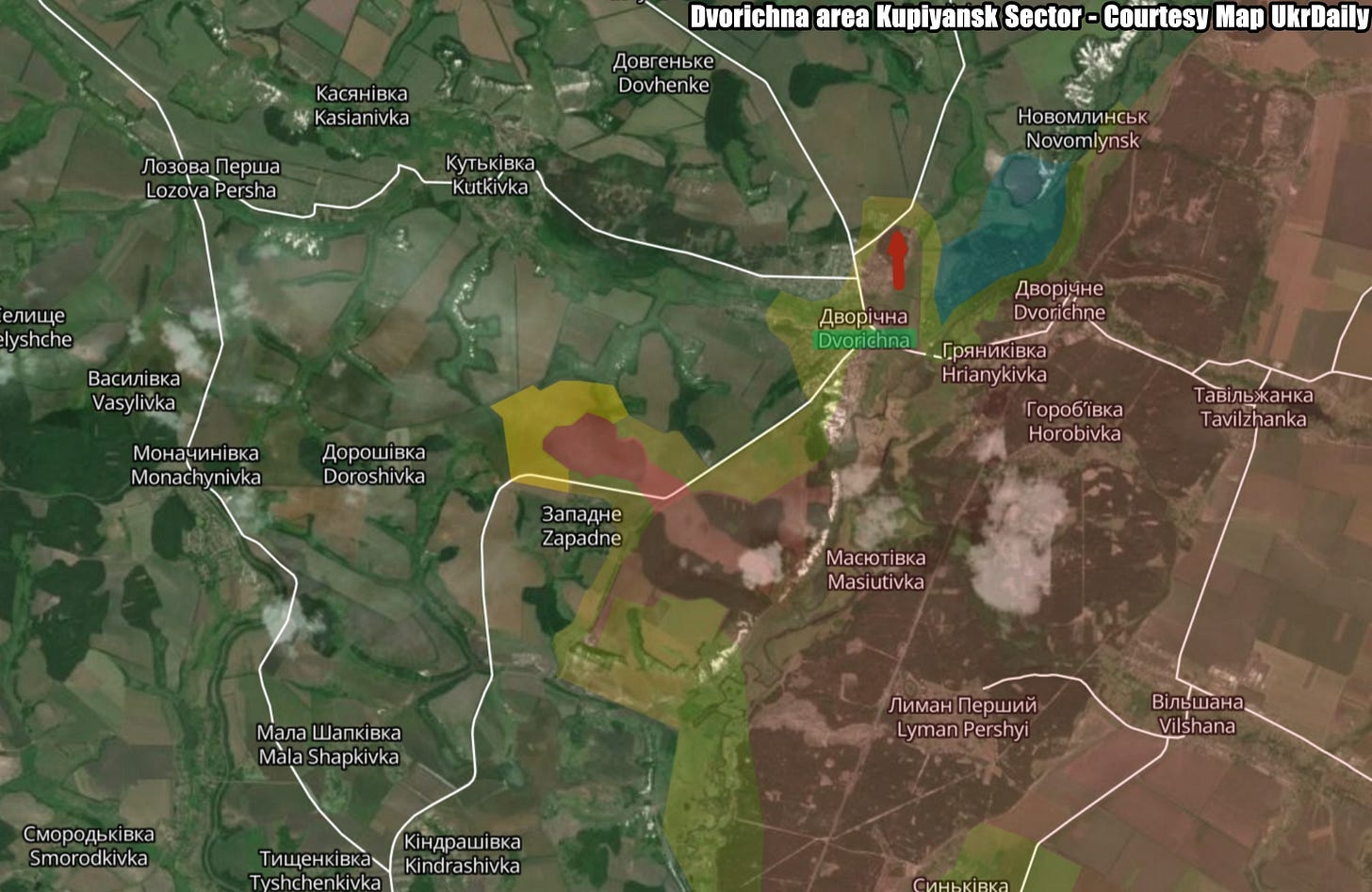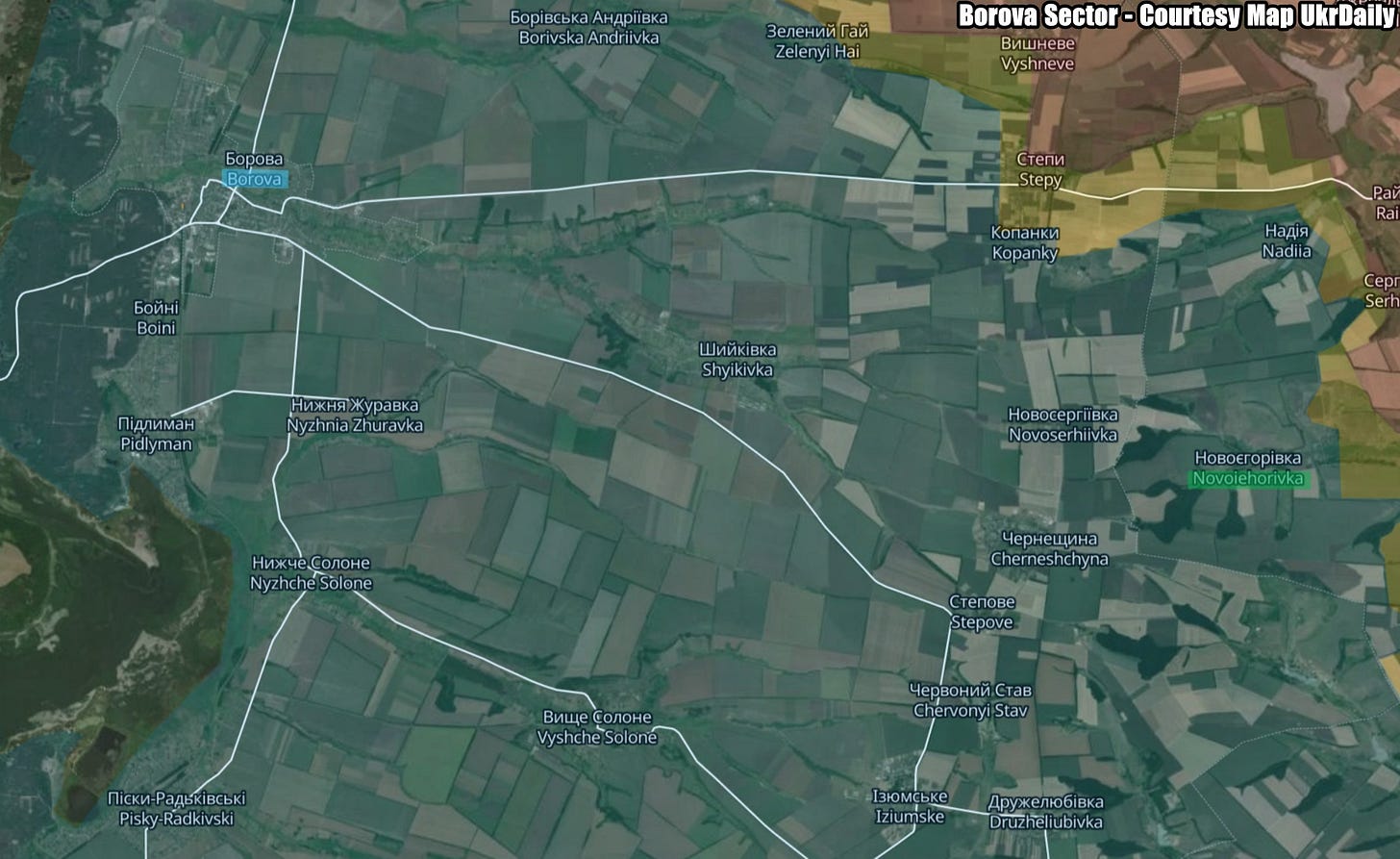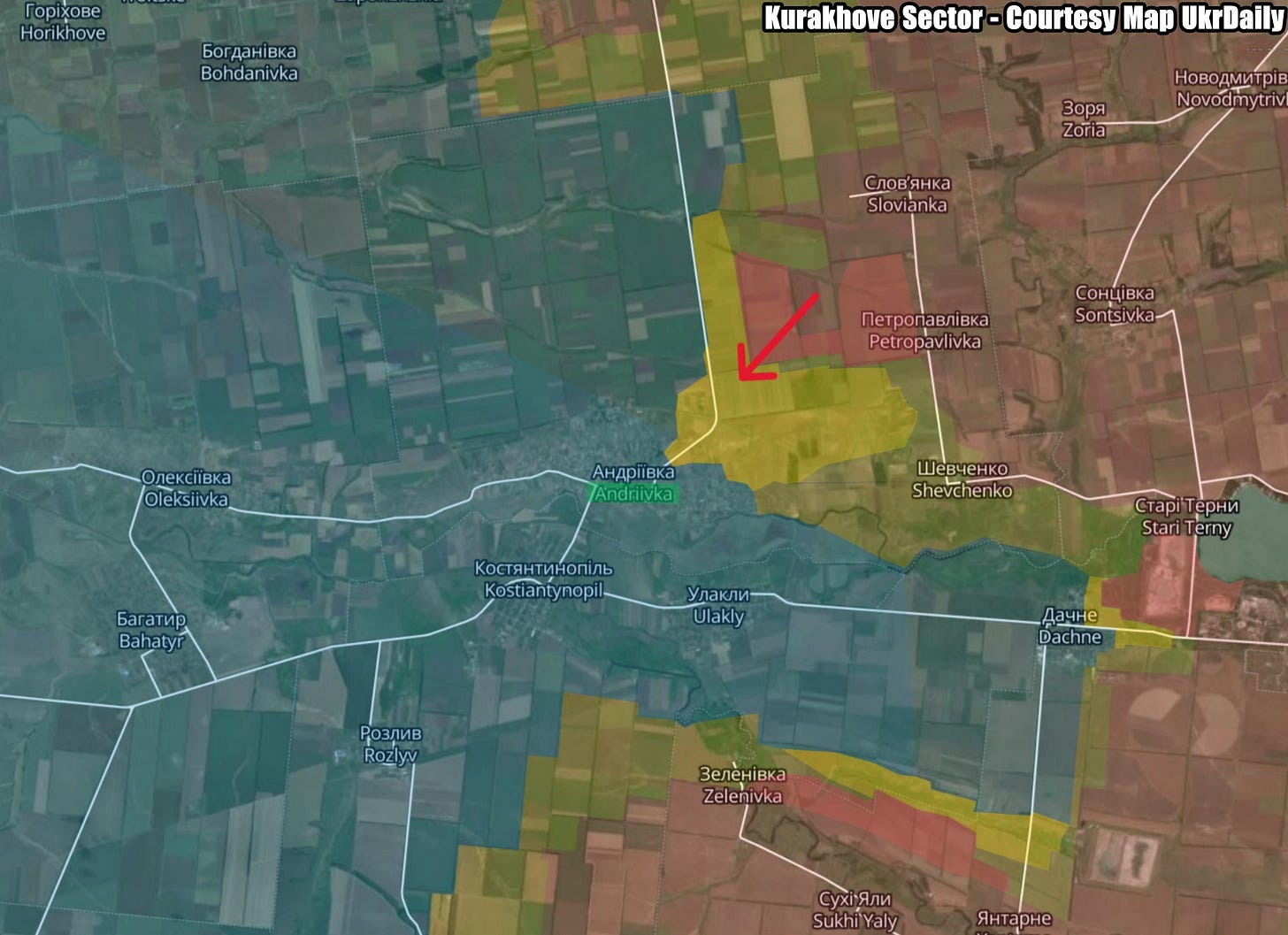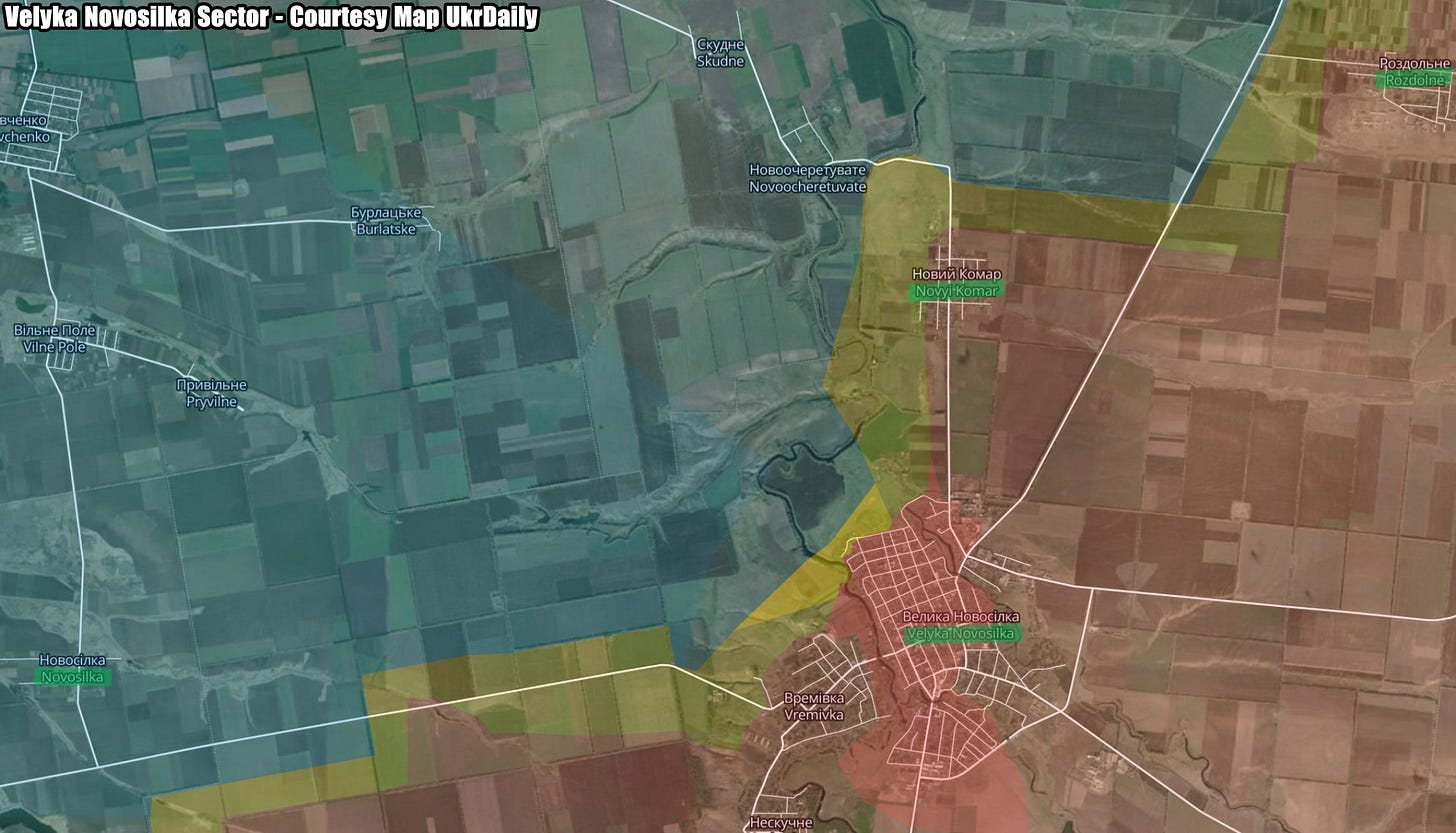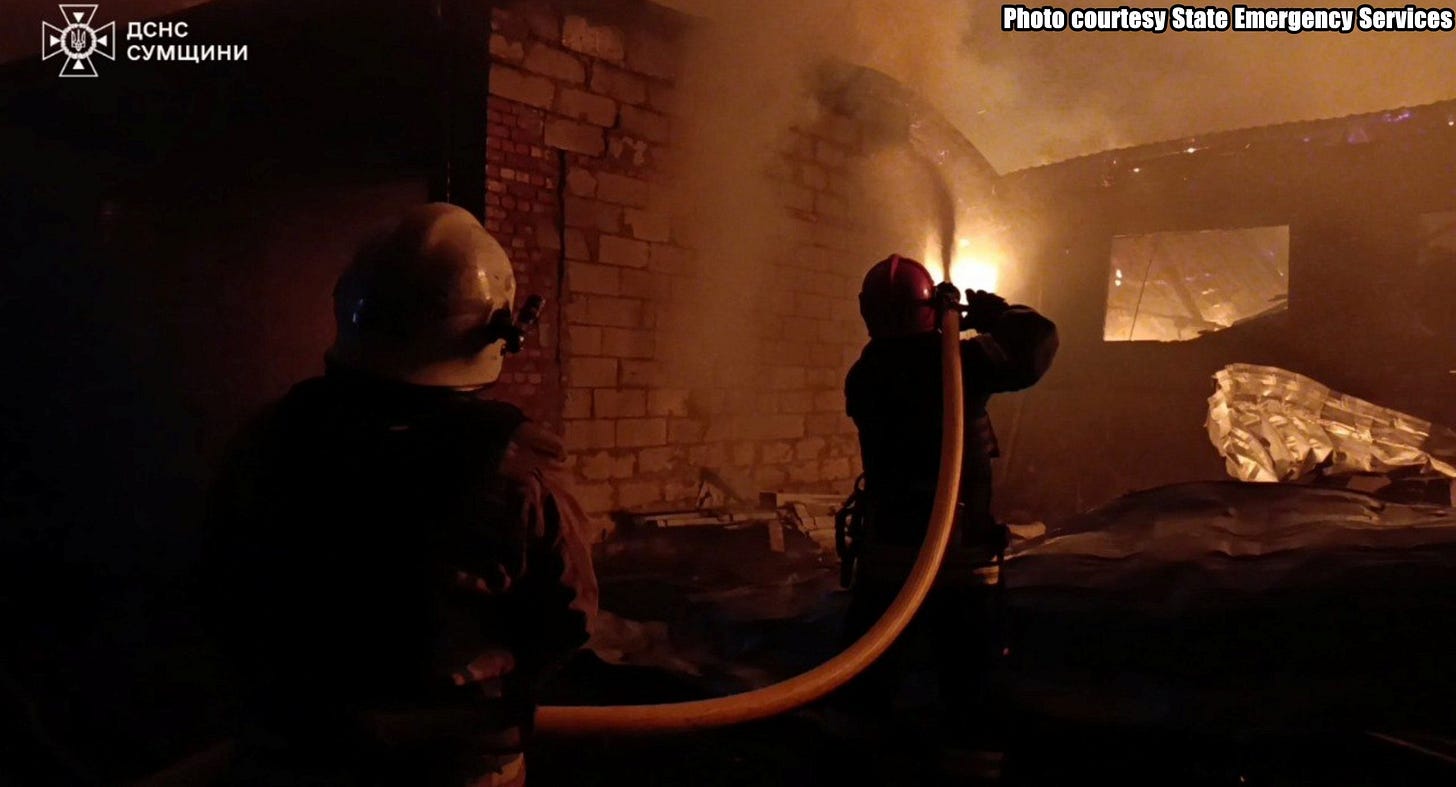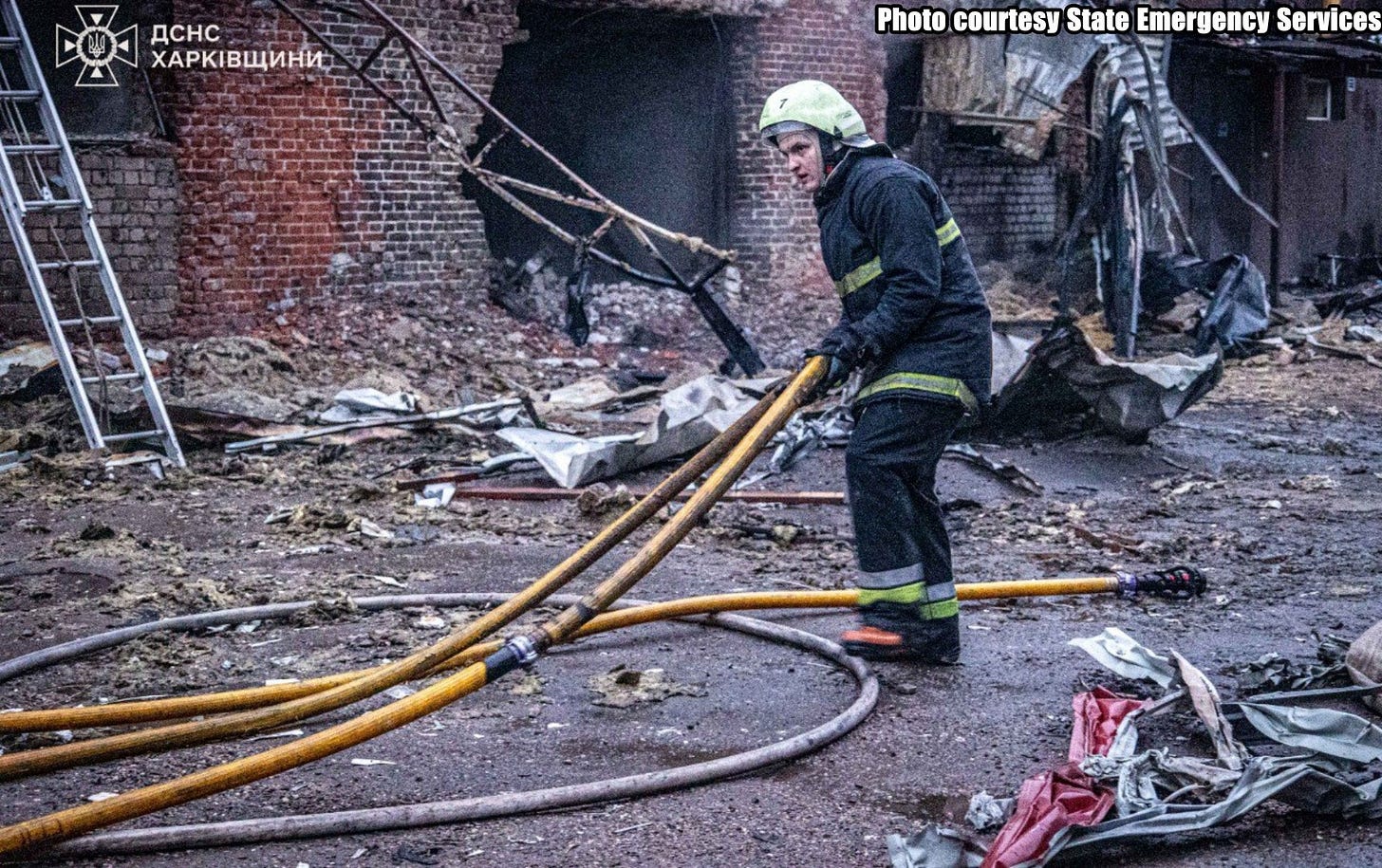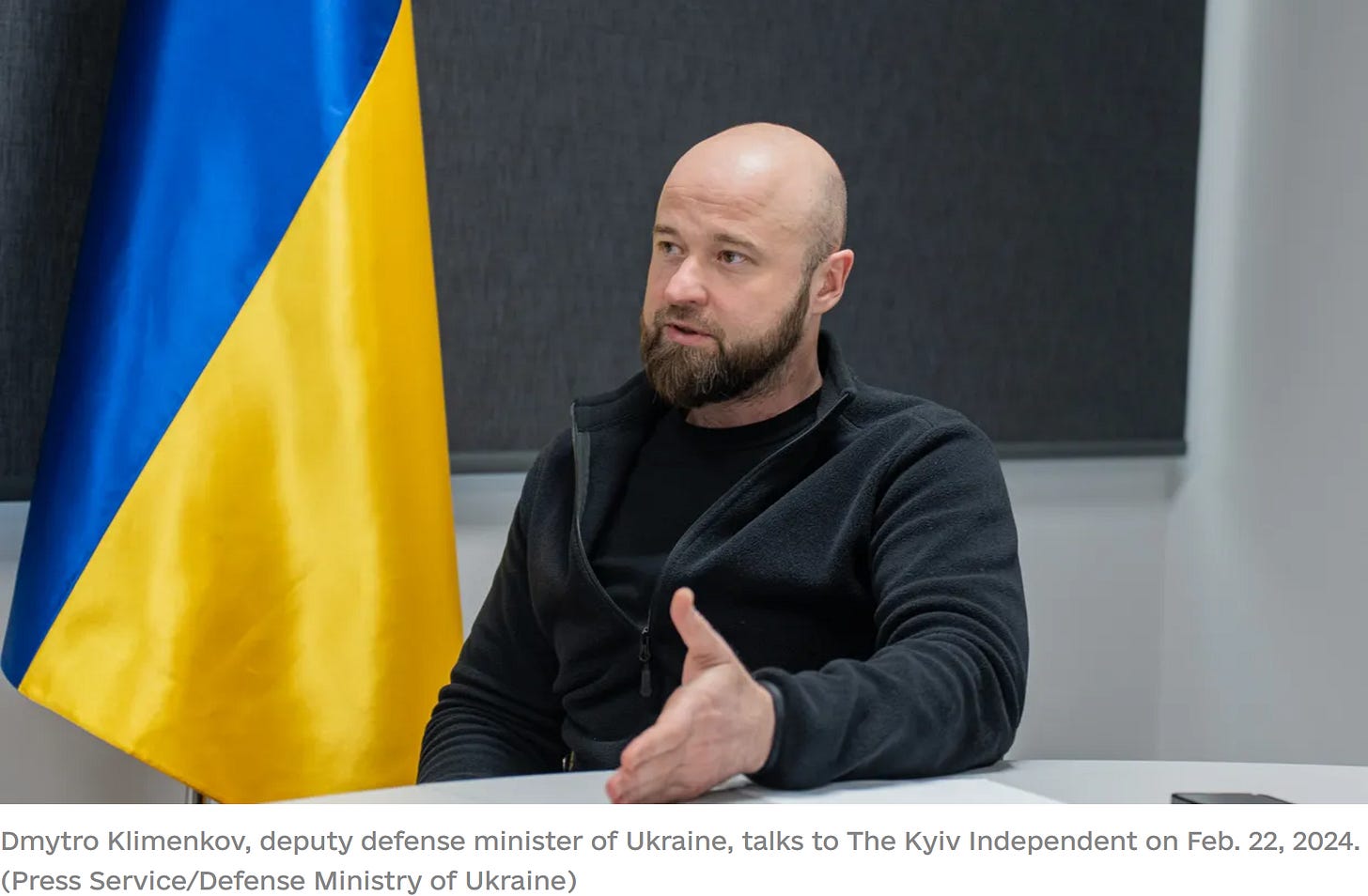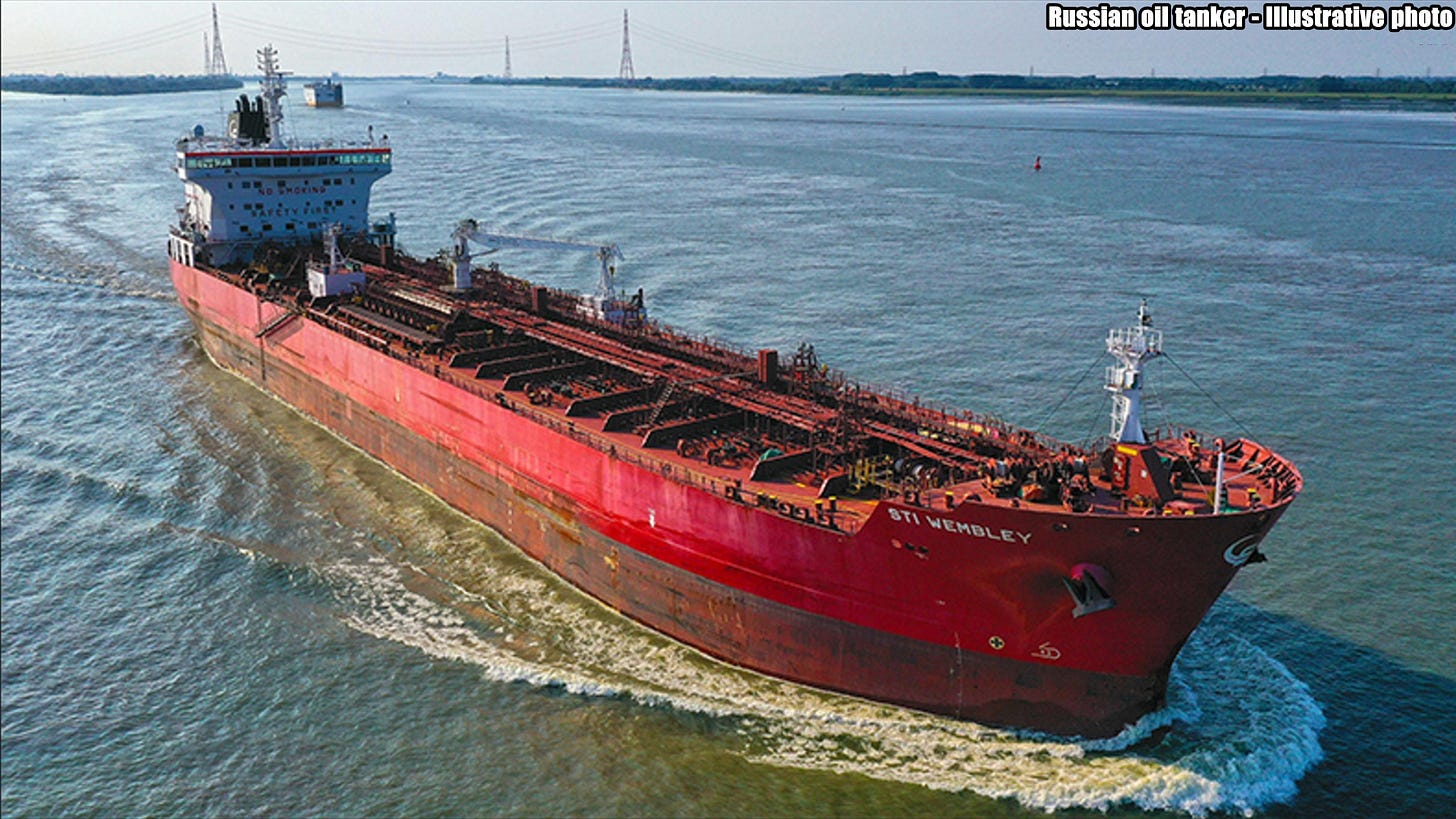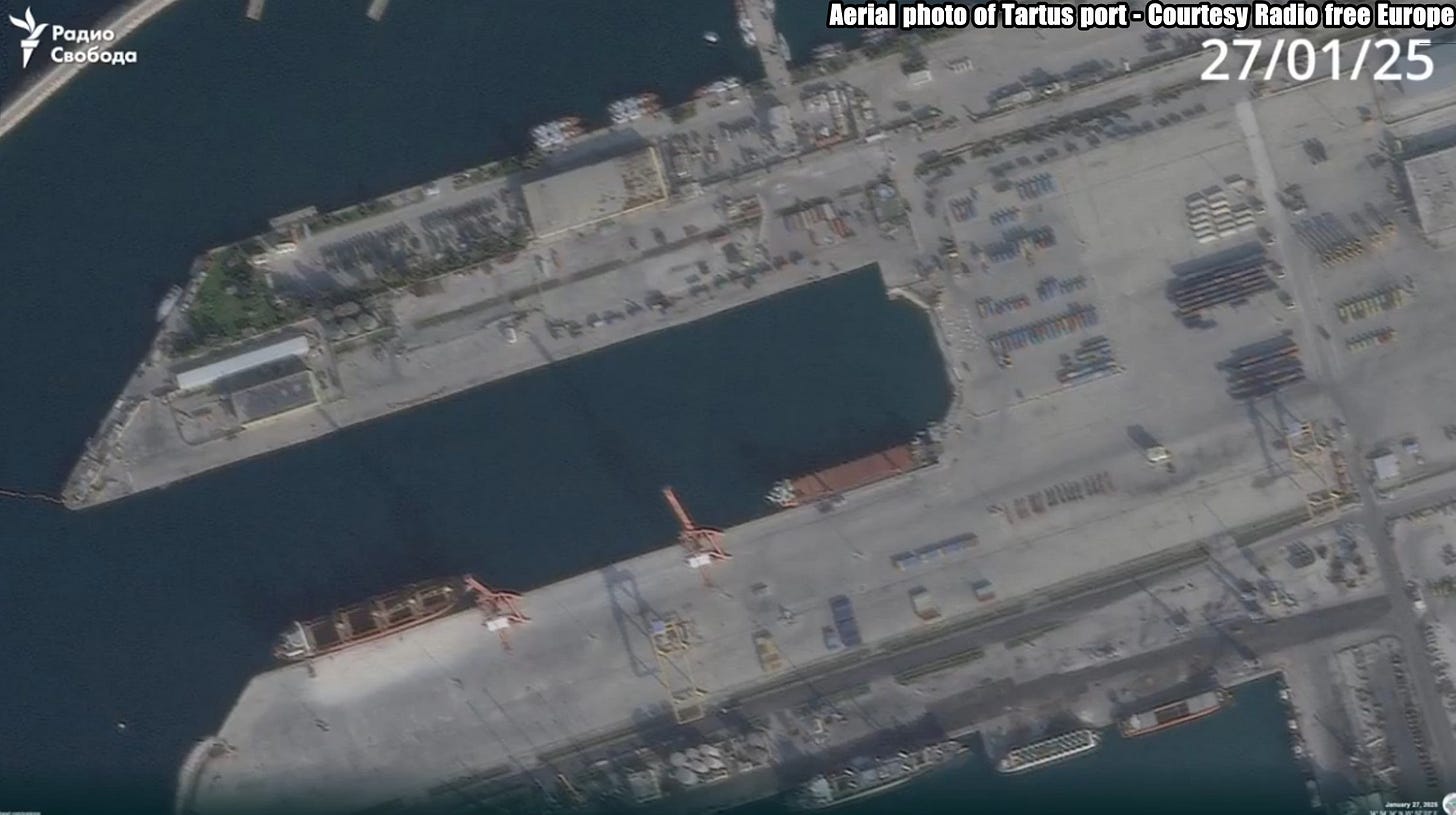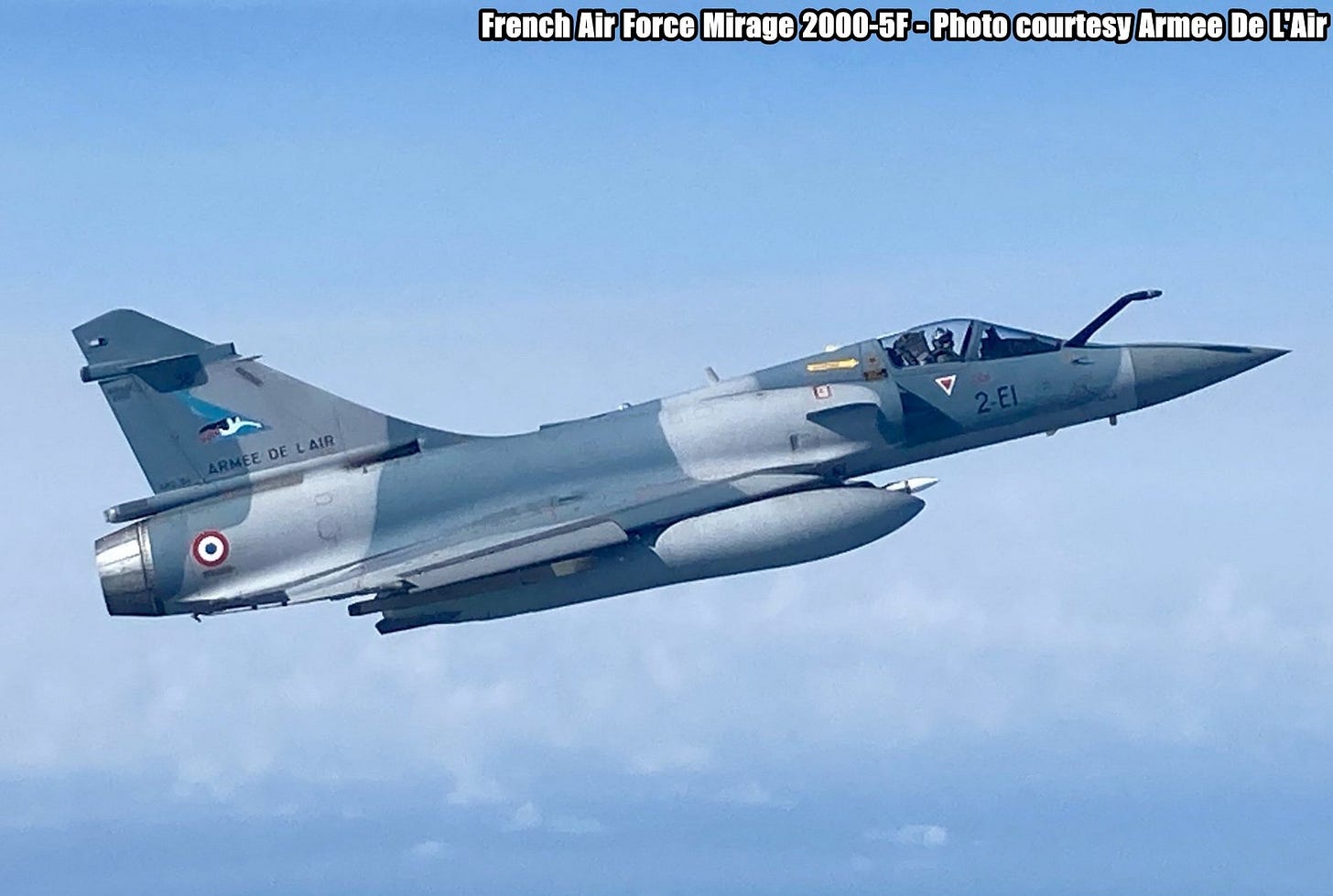Slava Ukraini! In early 2022 I began a Telegram channel aggregating news from a number of sources daily on the war in Ukraine. In June 2023 I began providing a daily draft for the Ukraine War Brief Podcast collecting news from over 70 sources daily, which formed the basis of the script. While the Podcast no longer exists I have continued to make this Brief available for my followers here on Substack for those who wish to keep up with the news from the war.
All the latest news on the Russo-Ukraine War 6 days per week
ALONG THE CONTACT LINE
GSAFU Morning Report
The General Staff of the Armed Forces of Ukraine in its Operational Information update at 08:00 on Jan 28 stated that day 1070 of the full-scale invasion of the Russian Federation against Ukraine had begun.
The situation on the line of combat remains tense in some sectors. Ukrainian defenders continue to actively counteract the Russian aggressor, causing them losses in personnel equipment and technology. Exhausting the enemy along the entire front line and continuing to disrupt the plans of Russian occupiers to advance deeper into the territory of Ukraine.
During the past day, 159 combat engagements took place.
Over the past 24 hours, the enemy carried out missile strikes, 28 air strikes, used 2,411 drones and fired approximately 5,000 artillery shells across the positions of Ukrainian forces and civilians.
Air Force Daily Report
65 ENEMY UAVS SHOT, 28 DRONES FAILED TO REACH THEIR TARGETS (LOCATIONALLY LOST)
➖➖➖➖➖➖➖➖➖
On the night of January 28, 2025 (from 8:00 p.m. on January 27), the enemy attacked with 100 Shahed attack UAVs and simulator drones of various types from the following directions: Orel, Bryansk, Kursk, Millerovo, Primorsko-Akhtarsk - Russia, Chauda - Crimea.
The air attack was repelled by aviation, anti-aircraft missile troops, electronic warfare units, and mobile fire groups of the Air Force and Defense Forces of Ukraine.
As of 09:30, it was confirmed that 65 Shahed attack UAVs and drones of other types were shot down in Kyiv, Kharkiv, Poltava, Sumy, Chernihiv, Cherkasy, Kirovohrad, Zhytomyr, Dnipropetrovsk, Zaporizhia, Mykolaiv, Odesa and Kherson regions.
28 enemy drones-simulators — lost in location (without negative consequences), two of them flew in the direction of Russia and Belarus. One drone — in the air, combat work continues!
As a result of the attack by Russian UAVs, buildings of private enterprises, infrastructure facilities, apartment and private houses, and vehicles were damaged. No casualties were reported, and assistance is being provided to the victims. Special services are eliminating the consequences of the enemy attack in the Odessa, Kyiv, Sumy, Poltava, Cherkasy, Chernihiv, and Kharkiv regions.
Combat Operations in the Kursk Sector, Russian Federation
The Institute for the Study of War (ISW), a US based think tank, in its Jan 27 Russian Offensive Campaign Assessment reported that Fighting continued in the Ukrainian salient in Kursk Oblast on Jan 27 but there were no confirmed changes to the frontline. The Russian Ministry of Defense (MoD) claimed on Jan 27 that Russian forces seized Nikolayevo-Darino (northwest of Sudzha), but ISW assesses that Russian forces likely seized the settlement as of January 21. Fighting continued near Kositsa (north of Sudzha), and Ukrainian forces reportedly counterattacked near Nikolayevo-Darino on Jan 26 and 27.
The Khortytsia operational-strategic group
(Responsible for the northeastern part of Ukraine. )
Kupyansk Sector:
Kharkiv Oblast governor denies Russian claims of capturing Dvorichna
Kharkiv Oblast Governor Oleh Syniehubov on Jan. 28 refuted the Russian Defense Ministry's claims that Russian forces had captured the village of Dvorichna in the Kupiansk district, emphasizing that fighting in the area is ongoing, Ukrinform reported.
"This is not the first statement of this kind from the Russian side; it is pure propaganda and does not reflect reality," Syniehubov said.
Located 100 kilometers (60 miles) east of Kharkiv and 17 kilometers (10 miles) north of Kupiansk, Dvorichna sits on the western bank of the Oskil River, a key geographic feature in the region.
Russia has been attempting to secure a foothold on this bank for months, aiming to outflank Ukrainian defenses and threaten a rear attack in Kupiansk.
Borova Sector: Russian milbloggers continued to complain about the Russian military command lying about battlefield successes, most recently in the Borova direction. Russian milbloggers denied on Jan 27 the Russian Ministry of Defense's (MoD) Jan 20 claim that Russian forces seized Novoyehorivka, claiming that Russian forces are still 1.5 kilometers from the settlement and that there has not been movement in this area for some time.
Chasiv Yar Sector: Russian forces recently advanced within central Chasiv Yar amid continued offensive operations in the area on Jan 27. Geolocated footage published on Jan 26 indicates that Russian forces recently advanced along Myru and Horkoho streets in central Chasiv Yar.
Toretsk Sector: Ukrainian and Russian forces recently advanced in the Toretsk direction amid continued Russian offensive operations in the area on Jan 27. Geolocated footage published on Jan 26 indicates that Ukrainian forces recently advanced in northwestern Toretsk. Additional geolocated footage published on Jan 27 indicates that Russian forces recently advanced near the Toretska Mine in northern Toretsk.
The Tavria operational-strategic group
(Responsible for the central-eastern and southeastern part of Ukraine.)
Kurakhove Sector:Russian forces recently advanced in the Kurakhove direction amid continued offensive operations in the area on Jan 27. Geolocated footage published on Jan 26 indicates that Russian forces recently advanced in northern Andriivka (northwest of Kurakhove).
Velyka Novosilka Sector: Russian forces continued offensive operations near Velyka Novosilka on Jan 27 but did not advance. Russian forces conducted offensive operations near Velyka Novosilka itself, northeast of Velyka Novosilka near Rozdolne, north of Velyka Novosilka near Novyi Komar, and west of Velyka Novosilka near Novosilka on Jan 26 and 27. A spokesman for the AFU stated on January 27 that Ukrainian forces withdrew from southern Velyka Novosilka in order to avoid encirclement. They also stated that Russian forces seized a significant part of the settlement but that Ukrainian forces maintain positions within Velyka Novosilka closer to the outskirts.
The Odesa operational-strategic group
(Responsible for Kherson, Qırım, (also known as Crimea) and the Black Sea.)
There have been no major changes to the combat environment since our last report.
TEMPORARILY OCCUPIED TERRITORIES
Nothing major to report.
THE HOME FRONT
Russian drone attacks injure eight, damage residences, Ukraine
Overnight Russian air attacks wounded eight people, set a private business on fire and damaged residential buildings around Ukraine, Reuters reported citing local officials on Tuesday.
Ukraine's air force said it shot down 65 drones and 28 more did not reach their targets in the barrage.
A 62-year-old woman was hospitalised and a 66-year-old man injured when drone debris damaged several houses in Kharkiv district that includes the city of the same name, regional governor Oleh Syniehubov said.
Emergency services were called soon after midnight to a private business that caught fire in Kharkiv due to the Russian drone attack, Mayor Ihor Terekhov said on Telegram.
Ukraine's state emergency service said the fire engulfed production facilities. Two people suffered acute stress reactions, including a child, the emergency service said.
It was not immediately clear what facility was burning. Video footage showed massive flames coming from what looked like an industrial building.
Russia also launched a drone attack on the Black Sea port of Odesa, damaging several residential buildings and cars, and injuring four people in the city and the nearby area, its governor Oleh Kiper said.
After the attack impacted power and heating in the central town of Uman in Cherkasy region, local services were working to restore the supply, according to mayor Iryna Pletnova.
The drone attack on the Kyiv region destroyed nine vehicles and damaged 27 more in the vintage car museum. It also damaged residential houses and cars around the region, without causing any casualties, the local authorities said.
There was no immediate comment from Russia. Both sides deny targeting civilians in the nearly three-year war that Russia started with a full-scale invasion on Ukraine in February 2022.
Government dismisses Deputy Defense Minister Klimenkov amid procurement tensions.
Ukraine's government has confirmed the dismissal of Dmytro Klimenkov from his position as deputy defense minister, The Kyiv Independent reported citing Taras Melnychuk, the government's parliamentary representative, on Jan. 28.
The decision follows ongoing tensions within the Defense Ministry over its weapons procurement process, which has been heavily scrutinized amid reform efforts.
Defense Minister Rustem Umerov announced Klimenkov's dismissal last week, claiming his deputy had "failed" the task of defense procurement. Concurrently, Umerov said he would not renew Maryna Bezrukova's contract as head of the Defense Procurement Agency (DPA).
Klimenkov joined the Defense Ministry from the State Property Fund, where he worked under Umerov's leadership. Appointed deputy defense minister on Oct. 5, 2023, he was responsible for overseeing procurement for the Armed Forces.
Bezrukova, appointed in January 2024 to lead procurement reforms following corruption scandals, had her contract extended by the DPA's supervisory board earlier this month. Under Ukrainian law, supervisory boards can hire and fire state enterprise leaders, making Umerov's refusal to renew her contract legally contentious.
Anti-corruption activists and lawmakers criticized the move, labeling it "unlawful" and warning that such actions could undermine efforts to reform Ukraine's defense procurement system.
Bezrukova's tenure highlighted internal disputes over procurement practices. At the start of her role, Bezrukova reported pressure from Klimenkov to sign a contract for 500,000 artillery shells from a manufacturer owned by the Strategic Industries Ministry.
Russia pressuring relatives of Ukrainian POWs to collaborate, officials say.
Russian intelligence services and military are attempting to influence relatives of Ukrainian prisoners of war (POWs) by contacting them immediately after their capture, the Ukrainian Coordination Headquarters for the Treatment of POWs reported on Jan. 27.
The calls are used to pressure relatives into cooperating with Russian forces by demanding money, sensitive information, or illegal actions in exchange for promises of better treatment or inclusion in prisoner exchanges, according to the statement.
"This is done to shock, emotionally pressure, and force the family to cooperate," the headquarters reported.
This comes as another example of Russia abusing or threatening Ukrainian captives as part of its all-out war against Ukraine. Kyiv and Moscow have carried out several prisoner exchanges during the conflict, though Russia has been accused of deliberately slowing down the swaps and spreading disinformation about the process to destabilize Ukraine.
Ukrainian authorities have documented widespread violations of the Geneva Conventions by Russia, including the execution of over 100 Ukrainian POWs in 2024 alone, according to Ukrainian Ombudsman Dmytro Lubinets.
Reports of torture, murder, and ill-treatment of Ukrainian captives have surged in recent months, particularly in Donetsk Oblast, where intense fighting continues. On Jan. 23, Ukraine's Prosecutor General's Office announced it was investigating a case of Russian troops summarily executing six Ukrainian POWs in the region.
RUSSIAN WORLD
Ukraine’s deep-strike campaign on Russian war industry signals strategic shift, expert says
Ukraine’s strategic campaign targeting Russian military-industrial infrastructure is gaining momentum, marking a significant shift in the war’s dynamics, according to military analysts. Recent large-scale attacks reaching up to 1,100 kilometers behind Russian front lines demonstrate Ukraine’s growing capability to disrupt Russia’s military-industrial complex and expose unprecedented vulnerabilities in Russian air defense systems. Euromaidan Press reports.
The most significant operation occurred on 13-14 January 2025, when Ukraine launched over 100 drones and missiles against Russian industrial facilities, oil depots, refineries, and ammunition storage sites across multiple regions, including Voronezh, Saratov, Tatarstan, and Orel. Additional strikes followed in the Kaluga and Tula regions, showing Ukraine’s sustained ability to conduct deep-strike operations.
“Strategic interdiction focuses on targeting an adversary state’s war-industrial infrastructure, key domestic defense industries, supply chains, and strategic transportation nodes,” explains Fabian Hoffmann, a researcher at the University of Oslo.
“Its primary objective is to disrupt the adversary’s military capabilities during deployment and pre-deployment stages, thereby reducing the aggregate war materials available to their forces.”
The effectiveness of this approach is already evident. Ukraine’s two-year campaign has reportedly reduced Russia’s oil refining capacity by 17% as of July 2024, according to an anonymous NATO official cited by European Pravda correspondent. Recent strikes on facilities like the Bryansk chemical plant, which produces explosives and rocket propellants, demonstrate the strategy’s potential to significantly impact Russia’s military capabilities. Even temporary disruptions to such facilities can have meaningful effects on Russia’s military output.
Russia’s air defense systems have struggled to counter these attacks effectively, particularly against low-flying drones employed in swarm tactics.
Notably, Russia’s response to recent attacks has been surprisingly muted. While Russia launched missile strikes against Ukraine in apparent retaliation, observers note the absence of the usual nuclear rhetoric from Russian leadership. Hoffmann suggests this might be due to changes in the international political landscape, particularly the transition in US administration, which has altered the usual dynamics of Russian threats and responses.
The campaign’s success doesn’t require immediate decisive victories. Drawing parallels to World War II, Hoffmann notes that similar strategic campaigns against Nazi Germany’s industrial capacity proved effective over time, even though German production initially continued to grow under bombardment.
“The key to evaluating success lies not in absolute terms but in relative ones,” Hoffmann explains. “Compared to the adversary’s maximum potential production, we need to assess by what percentage aggregate output has been reduced.”
The success of these operations also demonstrates Ukraine’s growing technological capabilities in developing advanced drone technologies as well as collaboration with Western partners. According to Hoffmann, his partnership has enabled Ukraine to rapidly scale its UAV capabilities, leaving Russia struggling to develop effective countermeasures.
“Every piece of equipment and war-relevant material that never reaches the frontline is something that doesn’t need to be destroyed there, saving critical manpower and equipment on the Ukrainian side,” Hoffmann emphasizes.
With Ukraine’s domestic missile and drone production increasing significantly, military analysts expect this strategic campaign to pose growing challenges for Russia in the coming months, potentially reshaping the conflict’s long-term trajectory.
As of January 2025, Ukraine’s defense industry has achieved remarkable efficiency, with domestic production accounting for over 96% of all unmanned aerial vehicles (UAVs) utilized by the military in 2024. Building on this momentum, Ukrainian Prime Minister Denys Shmyhal announced plans to produce at least 30,000 long-range drones in 2025, alongside approximately 3,000 cruise missiles and missile drones.
The strikes have already forced Russia to divert significant resources to protect its critical infrastructure, further straining its military logistics. For Ukraine, these attacks represent a cost-effective means of disrupting Russia’s war effort while demonstrating its ability to project power deep within Russian territory, even as the ground war continues.
INTERNATIONAL NEWS
Russia oil trade to China, India stalls as sanctions drive up shipping costs.
Trade for March-loading Russian oil in top buyer Asia has stalled as a wide price gap between buyers and sellers emerged in China after costs for chartering tankers unaffected by U.S. sanctions jumped, Reuters reports citing traders and shipping data.
Washington imposed fresh sanctions on Jan. 10 targeting Russia's oil supply chain, causing tanker freight rates to soar as some buyers and ports in China and India steered clear of sanctioned ships.
Offers for March Russian ESPO Blend crude exported from the Pacific port of Kozmino jumped to premiums of $3-$5 a barrel to ICE Brent on a delivered ex-ship basis (DES) to China after freight rates for an Aframax tanker on the route surged by several million dollars, three traders familiar with the grade said.
Prior to the January sanctions, robust winter demand and firming prices for rival grades from Iran sent spot premiums for ESPO Blend crude to China rising to close to $2 a barrel, the highest since the start of the Ukraine war in 2022, the aftermath of which had sent discounts to as deep as $6.
In India, Bharat Petroleum Corp Ltd's (BPCL.NS), opens new tab finance chief told Reuters last week that it has not received any new offers for March delivery, as it would ordinarily have, and expects the number of cargoes offered for March to drop from January and December.
India typically receives offers for Russian crude during the middle of each month.
Russian crude accounted for 36% of India's and nearly a fifth of China's 2024 imports.
The latest sanctions target tankers that carry about 42% of Russia's seaborne oil exports, primarily to China, according to analytics firm Kpler, although sanctioned tankers are gradually discharging oil in China and India during a waiver period.
The U.S. clarified to India that tankers loaded with Russian oil must discharge by Feb. 27 under the sanctions, India's oil secretary Pankaj Jain told reporters on Friday. Payments for oil onboard affected ships must be cleared by March 12, he added.
In China, newly sanctioned tankers face delays offloading oil despite meeting waiver requirements. Three of them discharged Russian ESPO and Sokol crude during Jan. 15-17 while tanker Olia offloaded at Shandong's Yantai port on Sunday after carrying its ESPO cargo for nearly three weeks, according to LSEG data.
Tanker Huihai Pacific is still waiting to discharge at Tianjin after loading its ESPO cargo on Jan. 5 while Viktor Titov is heading to Qingdao after loading Sokol on Jan. 6, LSEG data showed.
In India, nine newly sanctioned tankers have discharged oil since Jan. 10, with several carrying Urals crude on the way, LSEG data showed.
U.S. sanctions and a ban imposed early this month by China's Shandong Port Group will see refineries in Shandong province losing up to 1 million barrels per day of crude supply in the near term, consultancy FGE said.
Independent refiners are cutting runs as alternative supply is more costly, it said, expecting 400,000 bpd run cuts by February.
Russia removes military equipment from Syria
The Russian cargo ships Sparta and Sparta II have begun transporting military equipment out of the Syrian port of Tartus, Russia’s only naval base in the Mediterranean Sea, satellite images published by journalist Mark Krutov show.
After Sparta II left the port, most of the containers and military equipment at the dock disappeared, Krutov noted. The remaining equipment is now being loaded onto the Sparta. Meduza reports citing Norwegian naval analyst Tør Are Iversen, the process is being guarded by a Russian naval Grachonok-class anti-saboteur ship.
On January 21, Russian media reported that the port of Tartus had terminated a 49-year investment contract with Russia’s Stroytransgaz following the overthrow of Syrian leader Bashar al-Assad by rebels led by the group Hayat Tahrir al-Sham. Around the same time, cargo ships linked to the Russian Defense Ministry were allowed into the port. Before this, Russian transport ships and Navy vessels had been denied entry and were forced to drift off the Syrian coast. Several warships remain stationed near the port.
The Russian pro-war Telegram channel Fighterbomber wrote on January 22 that most of the Russian Armed Forces’ equipment and property is being transported by air. Ships, he said, are being used only for items that are too large or too expensive to move by plane.
MILITARY & TECH
First Dassault Mirage 2000-5F fighters will arrive in Ukraine by end of first quarter of 2025, - Barrot
The first batch of modernised French Dassault Mirage 2000-5F fighters will be delivered to Ukraine by the end of the first quarter of 2025. In total, Ukraine is to receive up to 10 of these combat aircraft.
This was reported by Censor.NET, citing Avions Legendaires, following an announcement by French Foreign Minister Jean-Noel Barrot.
The planes will be transferred from the French Aerospace Forces and adapted to perform the tasks of the Ukrainian army. This is part of France's key military assistance, which also includes Caesar artillery systems and AMX-10RC armoured vehicles.
"Probably, the first three copies will be delivered by 20 January 2025. Some sources even suggest that they are already present in Ukraine, but so far have only been conducting training flights," the article says.
As part of the modernisation, French experts equipped the aircraft with the ability to launch Scalp-EG and Storm Shadow cruise missiles. The Mirage 2000-5F will become the second ‘Western’ fighter jet in the Ukrainian Air Force after the US F-16.
The Mirage 2000-5F is a multi-role single-engine jet fighter developed by Dassault Aviation in the 1970s. It was the main combat aircraft of the French Air Force in the late 20th and early 21st centuries. In general, it was adopted by the armies of several countries in Asia, Europe and Latin America.
In June 2024, French President Emmanuel Macron announced that his country would provide Kyiv with Mirage 2000-5Fs and train pilots by the end of the year (in two years, Paris has committed to certifying the training of 26 Ukrainians).
Some of the pilots and mechanics completed their flight training on the Mirage 2000-5F in late December.
That’s it for today’s Brief folks if you would like to keep up with events in Ukraine daily please consider subscribing, it’s free!


